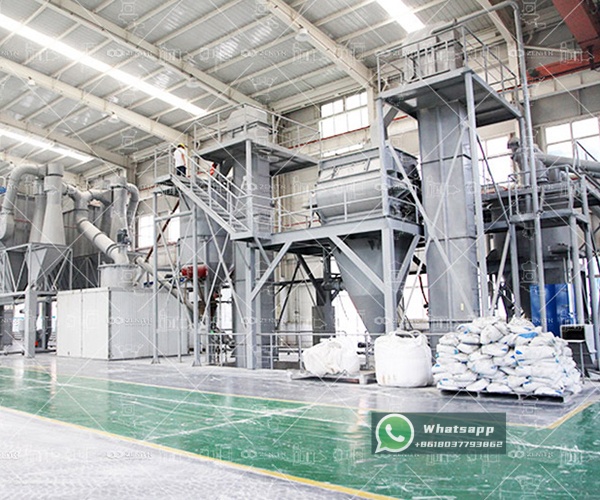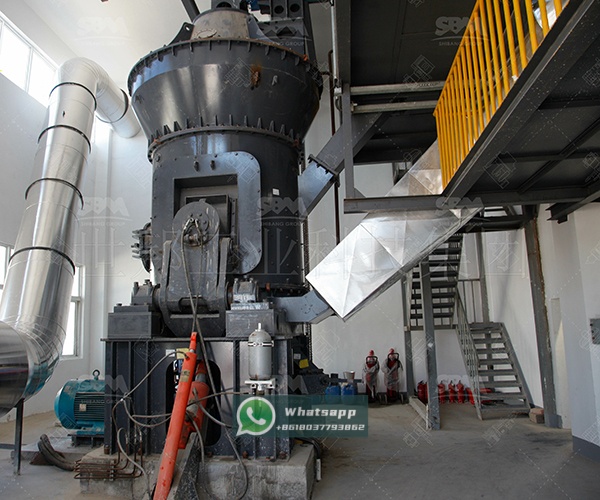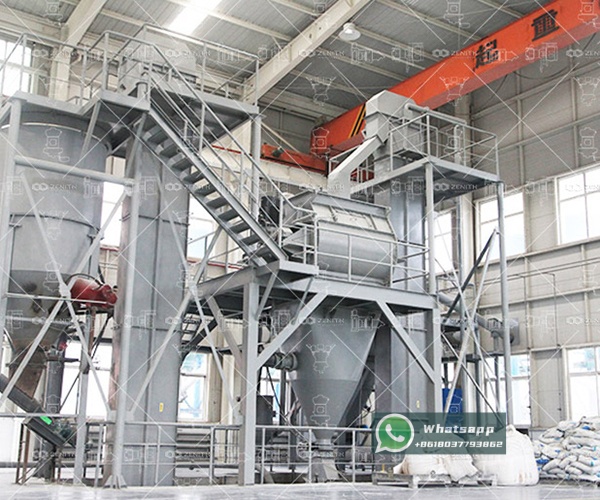The pursuit of excellence in the high-quality ink industry is intrinsically linked to the quality and performance of its raw materials. Among these, calcium carbonate (CaCO3), particularly in its calcite form, stands as a cornerstone filler and extender pigment. Its role, however, transcends mere volume addition; the particle size distribution, morphology, and surface chemistry of the ground calcite directly influence critical ink properties such as gloss, viscosity, stability, rub resistance, and printability. This article delves into the pivotal process of ultrafine calcite grinding, exploring its technical demands and presenting advanced technological solutions for achieving the superior product quality required by today’s demanding ink markets.
Calcite is prized in the ink industry for its unique combination of properties: brilliant whiteness, low oil absorption, chemical inertness, and cost-effectiveness. However, its effectiveness is entirely dependent on its particle size. Coarse particles can lead to increased abrasiveness, poor gloss, and settling issues within the ink varnish. Ultrafine grinding, typically targeting a top cut (D97) below 10 microns and often down to 2 microns or less, transforms calcite into a high-performance functional material.
The benefits of ultrafine ground calcite (GCC) are manifold:

Producing calcite powder that meets the stringent specifications of the ink industry is a complex engineering challenge. The process must overcome several hurdles:
Meeting these challenges requires robust, intelligent, and efficient grinding technology. Shanghai Zenith Machinery Co., Ltd., a leading manufacturer of ore grinding equipment in China, has made significant strides in the field of ultra-fine powder grinding. Specializing in the research, development, and production of industrial powder grinding equipment, Zenith offers a portfolio of mills engineered to deliver the precise product quality demanded by the high-quality ink industry.
For the specific application of producing ultrafine calcite with a top cut between 5-30 microns (D97), the LUM Ultrafine Vertical Mill represents a pinnacle of design. This mill integrates grinding, drying, classifying, and conveying into a single, compact unit. Its unique design, featuring multiple grinding rollers and a highly efficient classifier, ensures low energy consumption, minimal wear, and superior product fineness with a narrow particle size distribution—exactly what is needed for premium ink formulations.

The technical prowess of the LUM series is evident in its parameters. For instance, the LUM1632 model is perfectly suited for medium to large-scale calcite production for the ink industry.
| Model | Main machine power (kW) | Capacity (t/h) | Size distribution D97 (μm) |
|---|---|---|---|
| LUM1632 | 280-315 | 2.0-13.5 | 5-30 |
For projects requiring even finer products or different capacity ranges, Zenith’s XZM Ultrafine Grinding Mill is another excellent option. Renowned for its ability to produce powder from 325 to 2500 mesh, the XZM series is ideal for producing superfine calcite grades. The XZM268 model, with its large working diameter and powerful motor, offers high output of consistently fine material.
| Model | Working diameter (mm) | Max feed size (mm) | Final size (mesh) | Output (kg/h) | Main motor power (kW) |
|---|---|---|---|---|---|
| XZM268 | Φ1680 | ≤20 | 325-2500 | 5000-25000 | 315 |
The transformation of raw calcite into a high-value functional additive for the ink industry is a precise science. It demands grinding technology that delivers not just fineness, but consistency, efficiency, and purity. The advanced engineering behind mills like Shanghai Zenith’s LUM and XZM series provides the necessary tools to overcome the technical challenges of ultrafine grinding. By investing in such technology, calcite producers and ink manufacturers can ensure a reliable supply of superior quality material, paving the way for innovative, high-performance ink products that meet the evolving needs of the printing world. The synergy between advanced mineral processing technology and precise ink formulation is what ultimately creates the vivid colors, sharp details, and durable finishes that define high-quality printing.
